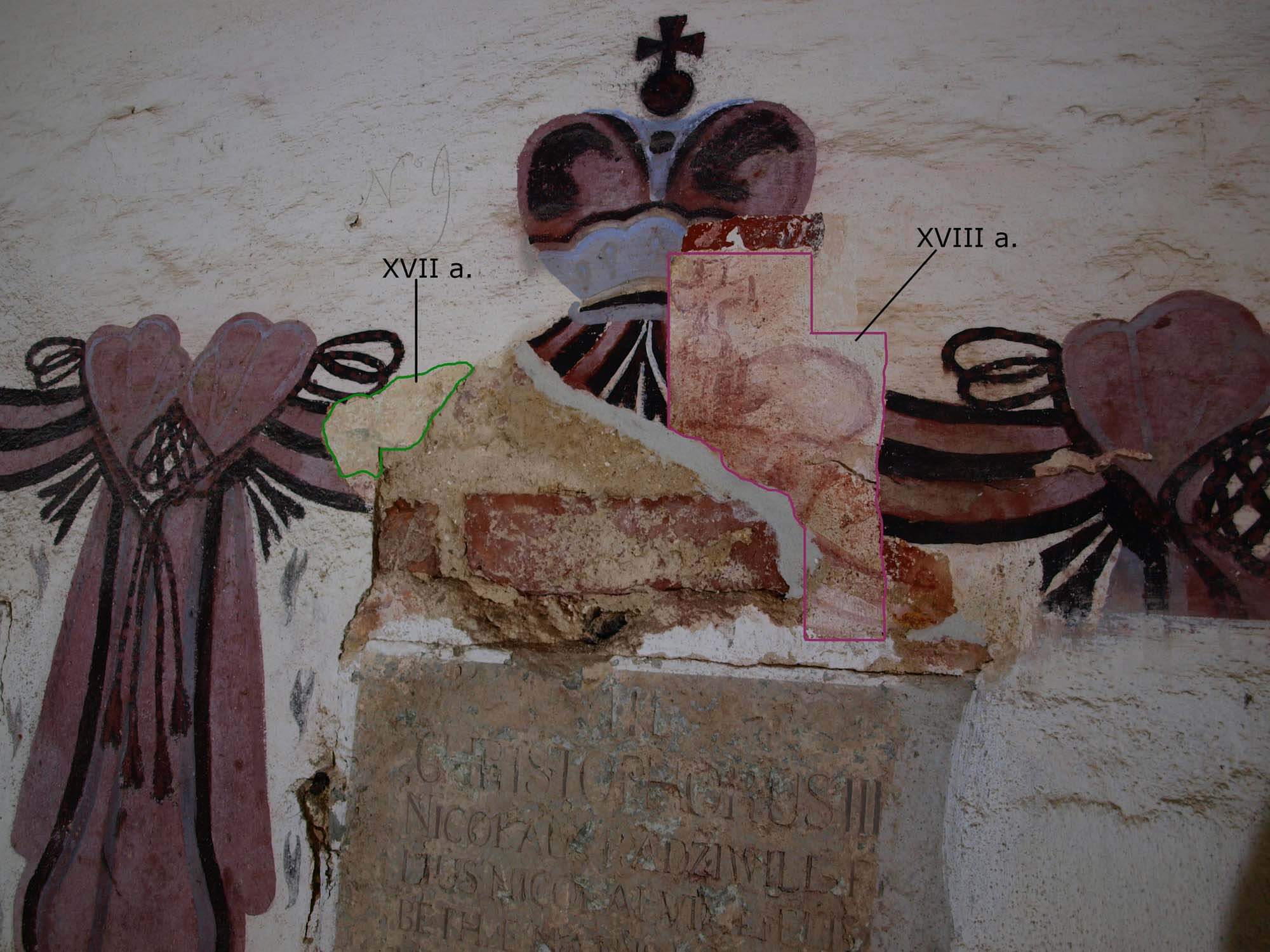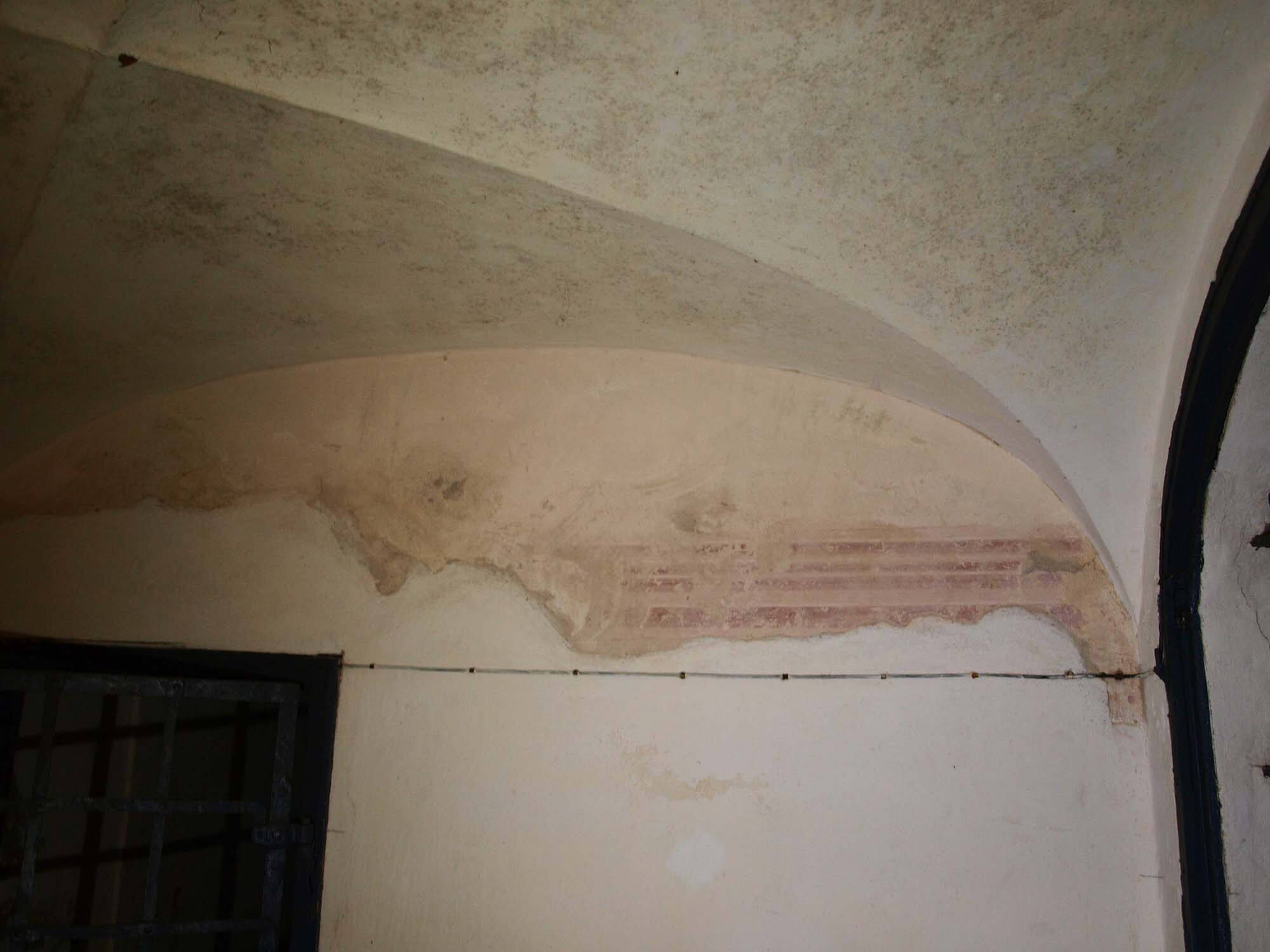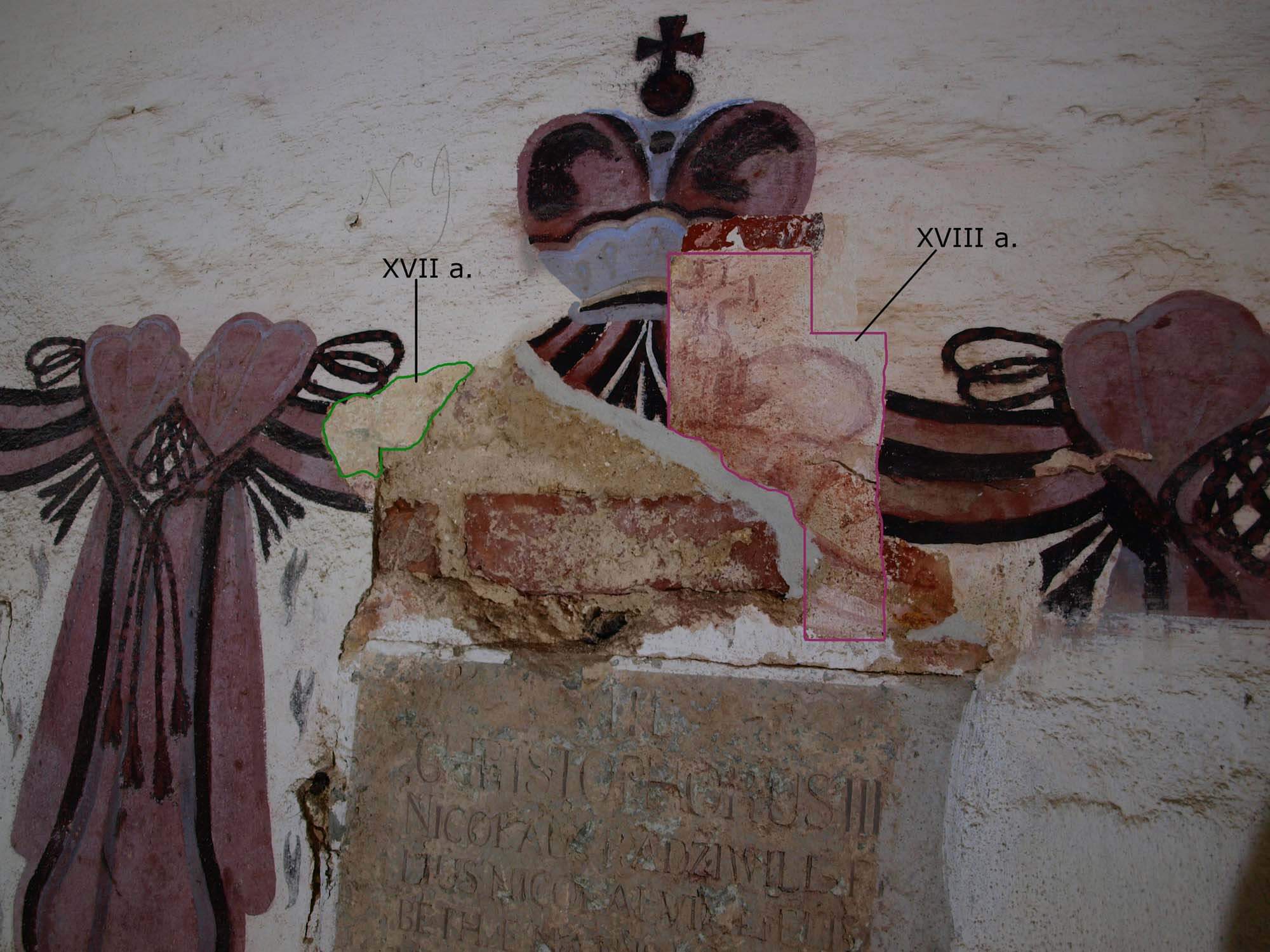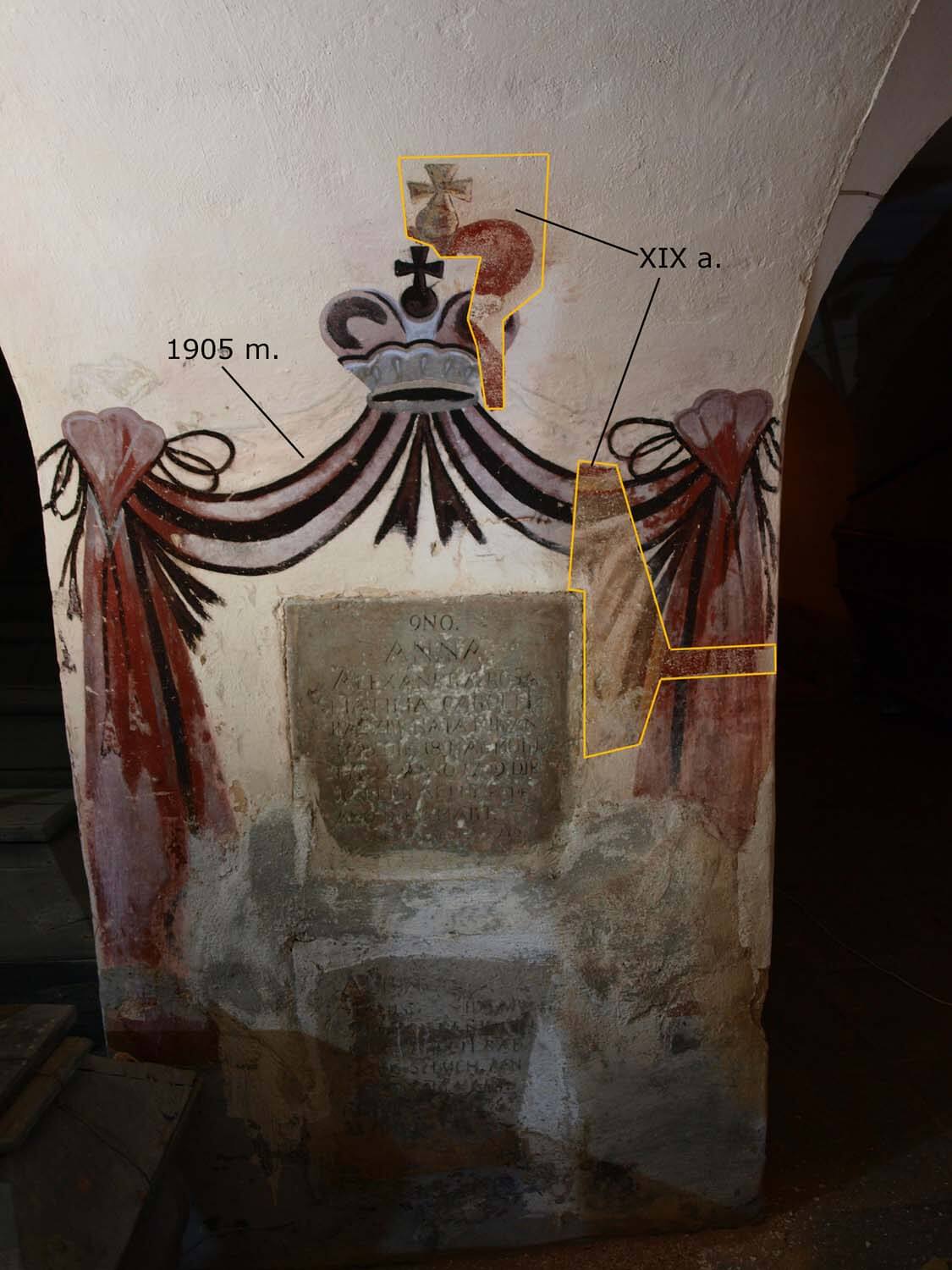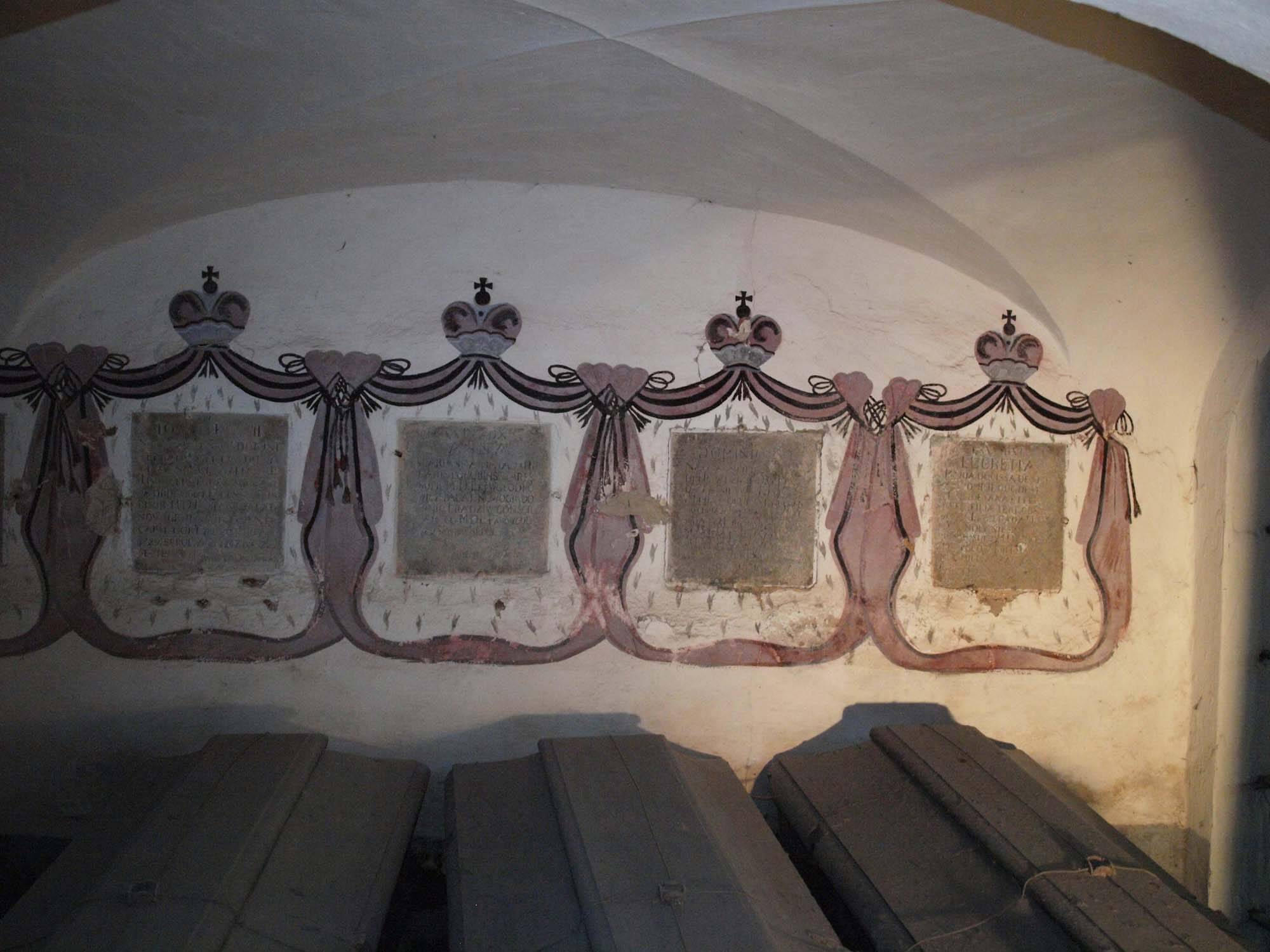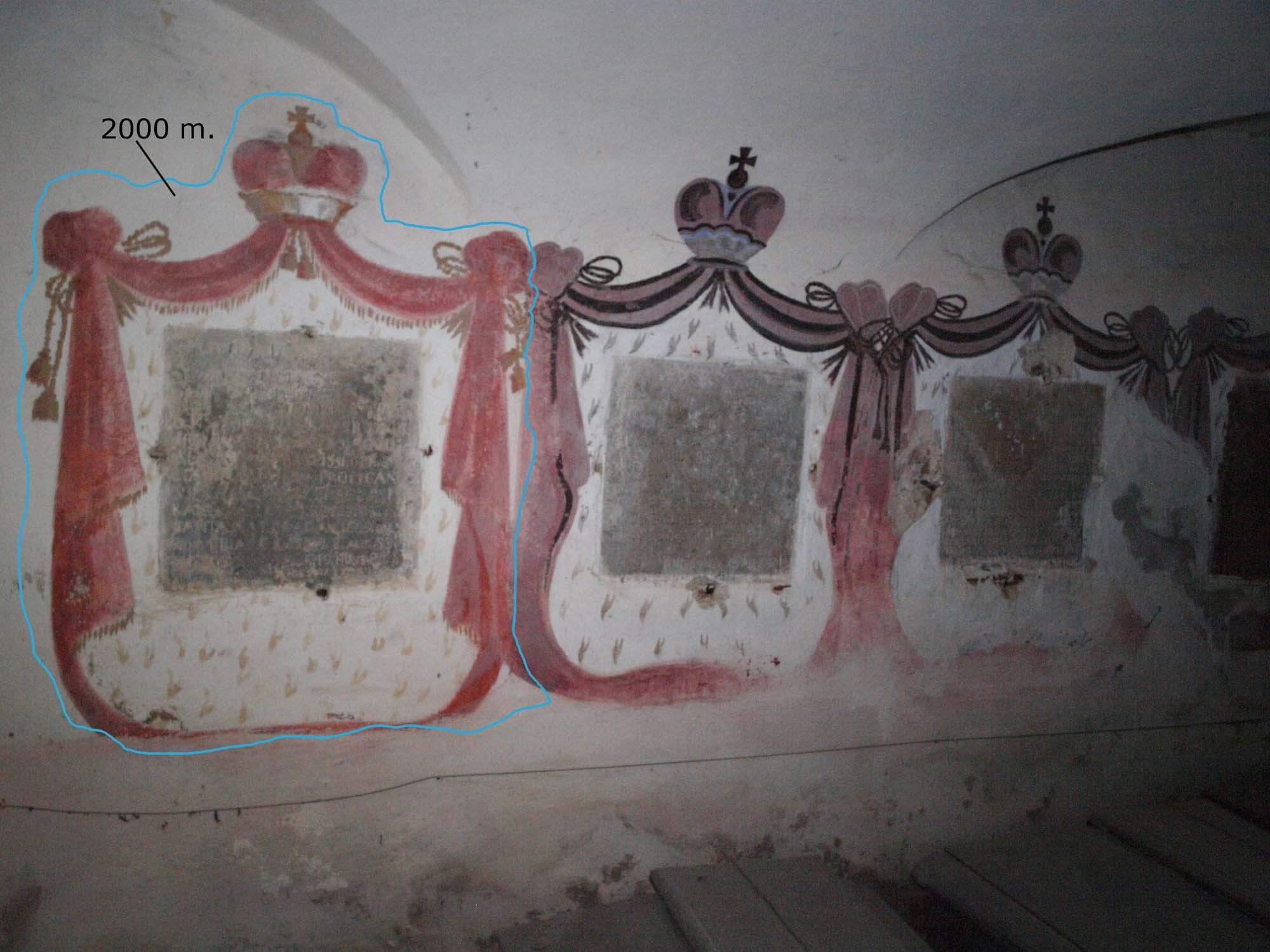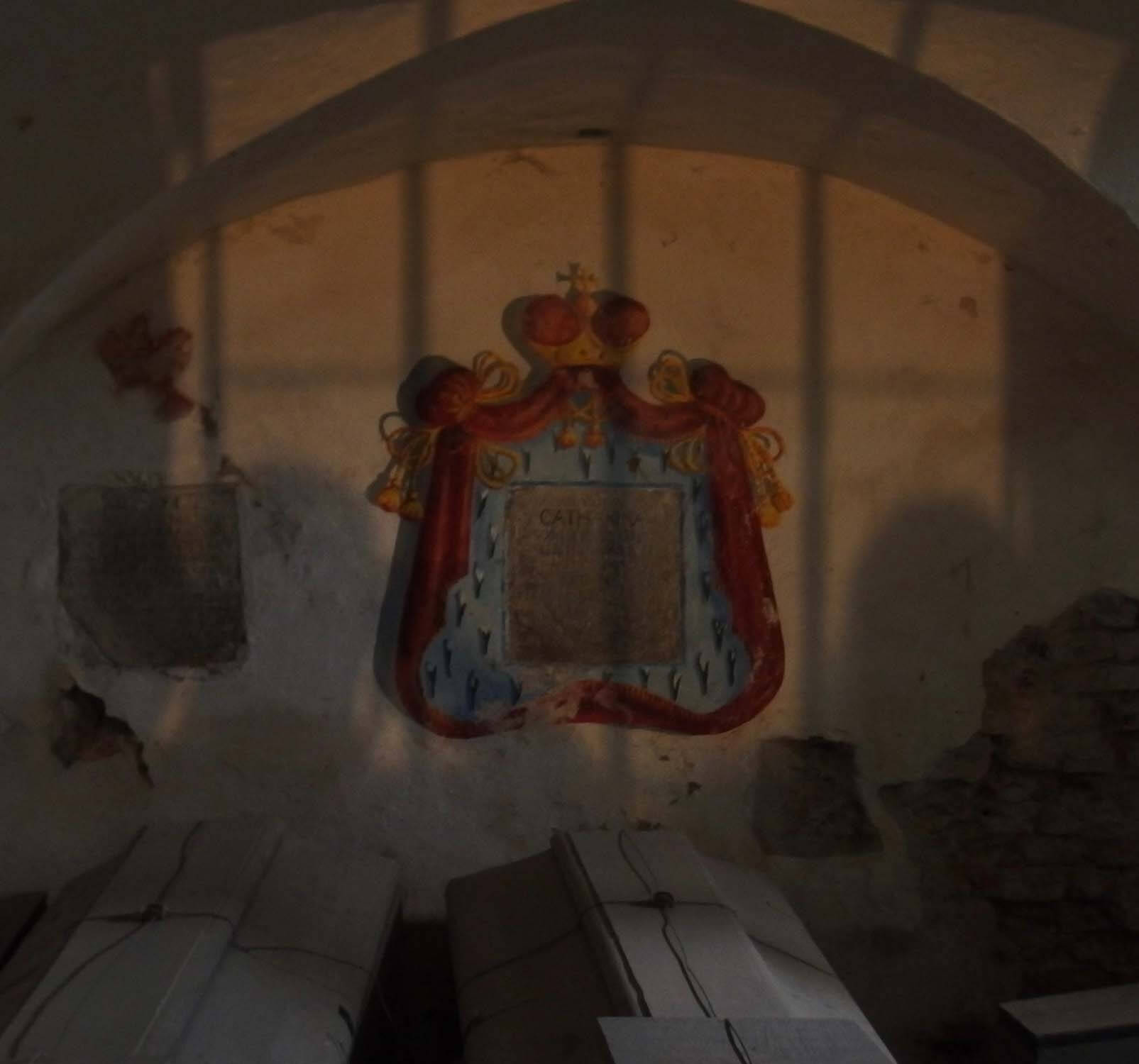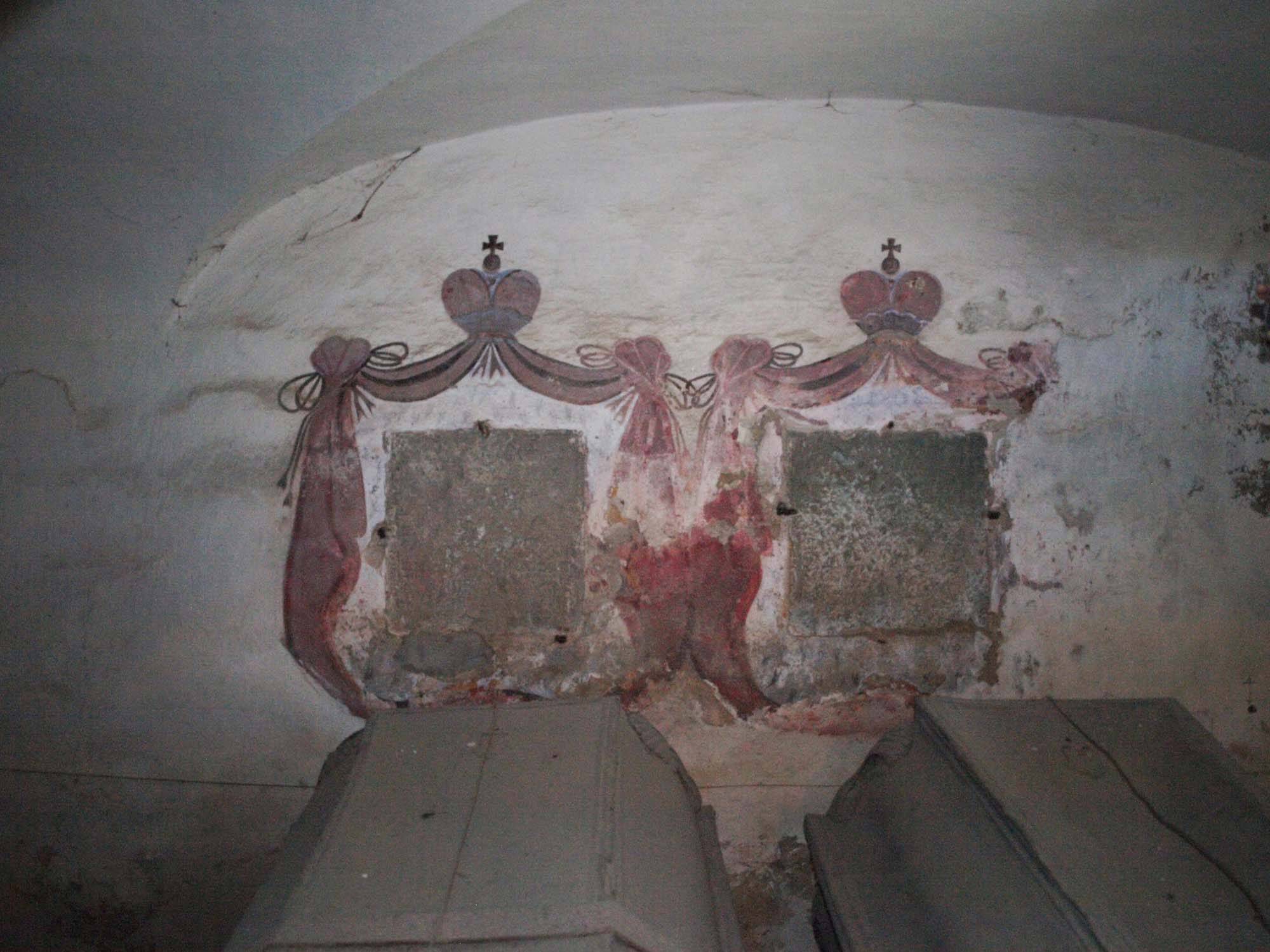During the expedition to the Corpus Christi Church in Nesvizh made in 2016, the exploratory polychrome research was carried out. Easily accessible and badly damaged spots were selected for research.
A polychrome layer dating back to the earliest or the first stage of the crypt development was discovered (probably at the turn of the 17th-18th centuries, when the church was built and several crypts were constructed underneath it). Unfortunately, only a very small fragment was found, which was not enough to identify accurately whether it was a decor or just simple painting.
Another polychrome layer dated back to the 18th century (in the middle of that century the crypt was reconstructed on the initiative of Michał Kazimierz Radziwiłł Rybeńko). The premise of the altar/“porch” was decorated with baroque painting of architectural forms in cold reddish shades. Only a small fragment of it has survived. Polychrome on the western wall of that room was destroyed when installing entrances to the newly added crypt premises. The vaults of the premise were not decorated with painting, only light reddish smooth painting was discovered.
The crypt contains about 30 painted cartouches which “frame” the epitaphial plates embedded in the wall. Having carried out research on the cartouches in the “main” room of the crypt, it was established that they had been repainted several times. Speaking about the layer dating back to the 18th century, it is likely that not all the epitaphial plates were framed by pained cartouches or they failed to survive. The cartouches painted at that time were somewhat smaller than the ones seen today, which were repainted in 1905. The colour gamut of painting also differs: cold light reddish, purple and grey tones were used. The surviving layer of paint is quite firm.
Questions about determining the date of the third polychrome layer arise. It might be the 19th century painting. It is much brighter and more colourful than painting of the baroque period. Warm shades of ochre, brown, red and sky blue colours prevail. The repainted cartouches are much bigger. In some places repainting was made on a white background and in some places directly over the former painting, glue paint was used.
Another layer, which is clearly visible today, is dated back to 1905. As many as 28 out of 30 surviving cartouches are assigned to it. They were painted in a rough manner, schematically. Poor quality paints were used; some of their pigments have changed their colour. Painting has been badly affected by high humidity and unsuitable microclimate in the crypt.
The cartouches were repainted once again in around 2000, when preparing for the funeral of Anton Mikołaj Radziwiłł (1936-1999). Two cartouches were repainted. Their stylistics, colours and performance technique seem amateurish. The most recent repainting of the cartouches was made in the 21st century when the cartouches on the side premises of the crypt were repainted by Polish conservators-restorers.
The condition of polychrome was assessed as really bad: in some places plaster was ripped off and there were cracks; painting was flaking or destroyed, no binding agent was left; there were erasures, re-plastered fragments, or places filled with cement plaster. The painting layer dating back to 1905 tuned out to be soft, liable to stain, deprived of its binding agent, and its the colours are faded.
Research was carried out by the restorer of the highest category of wall paintings Indrė Valkiūnienė
The text was prepared by Audronė Vyšniauskienė
Sources of Illustrations:
| 1. | Photograph by Indrė Valkiūnienė, 2016 // in: Indrė Valkiūnienė’s personal collection. |
| 2. | Photograph by Indrė Valkiūnienė, 2016 // in: Indrė Valkiūnienė’s personal collection. |
| 3. | Photograph by Indrė Valkiūnienė, 2016 // in: Indrė Valkiūnienė’s personal collection. |
| 4. | Photograph by Indrė Valkiūnienė, 2016 // in: Indrė Valkiūnienė’s personal collection. |
| 5. | Photograph by Indrė Valkiūnienė, 2016 // in: Indrė Valkiūnienė’s personal collection. |
| 6. | Photograph by Indrė Valkiūnienė, 2016 // in: Indrė Valkiūnienė’s personal collection. |
| 7. | Photograph by Salvijus Kulevičius, 2016 // in: Salvijus Kulevičius’ personal collection. |
| 8. | Photograph by Indrė Valkiūnienė, 2016 // in: Indrė Valkiūnienė’s personal collection. |
